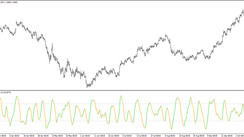Crafting Your Forex Trading Strategy: Understanding Position Size
When it comes to day trading in the forex market, the importance of position size—defined by the number of units you trade—can't be overstated. Your entry and exit points might be crucial, but it's the size of your trade that really makes the difference. Without a proper grasp of your position size, you might risk too much, draining your trading account quickly, or too little, thereby missing potential returns.
Your position size depends on the number of lots you are buying or selling in a particular trade, categorized as micro (1,000 units), mini (10,000 units), or standard lots (100,000 units).
This concept goes hand in hand with two types of risk: trade risk and account risk. Let's delve into how these factors intertwine to help you optimize your position size, regardless of market conditions, trade setup, or the strategy you employ.
Setting Account Risk Limits for Each Trade
Determining the risk limit for your forex position size is the first and most vital step. This entails establishing a limit on the amount or percentage of your total account you're willing to risk on each trade. For instance, if you hold a $10,000 trading account, a 1% risk limit translates into $100 risk per trade. A 0.5% risk limit, on the other hand, represents a $50 risk per trade. The amount you risk should always align with your account size and your predetermined maximum percentage.
Most professional traders confine their risk to 1% or less of their account. It is also acceptable to utilize a fixed dollar amount equivalent to 1% or less of your account value. Hence, if your account balance exceeds $7,500, a risk of $75 per trade is within the acceptable range.
Maintaining a constant account risk is crucial. Avoid inconsistent risks, like 5% on one trade, 1% on the next, and 3% on another. Establish your risk limit, be it percentage-based or a fixed dollar amount, and adhere to it—unless your chosen dollar amount surpasses the 1% rule.
Calculating Pip Risk for Your Trade
With your maximum account risk in place, you can shift your focus to the specific trade at hand.
"Pip risk" refers to the difference between your entry point and your stop-loss order point. In the world of forex, a pip, standing for "percentage in point" or "price interest point," represents the smallest part of a currency price that can change. Typically, a pip is 0.0001 or one-hundredth of a percent, though for pairs with the Japanese yen (JPY), it equates to 0.01 or 1 percentage point. Some brokers may display prices with an extra decimal place known as a pipette.
A stop-loss order ensures your trade closes out if it incurs a specific loss. It helps limit your losses to an acceptable level and its placement directly correlates with the pip risk for the trade.
For instance, if you purchase a EUR/USD pair at $1.2151 and establish a stop-loss at $1.2141, your risk equates to 10 pips. Pip risk varies, based on strategy and volatility. A trade could carry a five-pip risk, and another might have a 15-pip risk.
Understanding the Pip Value for Your Trade
If you are trading a currency pair where the U.S. dollar is the quote currency and your account is dollar-funded, pip values for various lot sizes are fixed. For a micro lot, each pip is worth $0.10, for a mini lot, $1, and for a standard lot, $10.
If your trading account is dollar-funded and the quote currency isn't the U.S. dollar, you will need to adjust the pip values by the current exchange rate between the dollar and the quote currency. Suppose you're trading the EUR/GBP pair, and the USD/GBP exchange rate is $1.2219. The pip value would be $0.12 for a micro lot, $1.22 for a mini lot, and $12.22 for a standard lot.
Determining the Position Size for Your Trade
The ideal position size is given by the equation:
Pips at risk * pip value * lots traded = amount at risk
Let's say you have a $10,000 account, and your risk is capped at $100 per trade. You're trading the EUR/USD pair, deciding to buy at $1.3051 and placing a stop loss at $1.3041, meaning you're risking 10 pips. Considering each pip movement in a mini lot is worth $1, you should trade 10 mini lots or one standard lot.
If you were to trade mini lots of the EUR/GBP, buying at $0.9804 and setting a stop loss at $0.9794, this equates to 10 pips of risk.
10 * $1.22 * lots traded = $100
In this case, your position size should be eight mini lots and one micro lot.
Closing Remarks: Clearing Some Common Forex Doubts
As we draw to a close, let's answer a couple of questions often raised by forex traders.
One common query is: How do you hedge a forex position? There are a plethora of options for hedging in forex trading. Essentially, any trade you predict to move in the reverse direction of your current position can serve as a hedge. This might be another forex position, such as selling dollars in one pairing and buying them in another. Alternatively, hedging can occur in a different market through instruments like dollar index ETFs or futures contracts.
Another question that frequently arises is: What is an open position in forex trading? An open position is simply a trade that is still active. For instance, suppose you initiate a trade by selling U.S. dollars in exchange for Japanese yen. In that case, this trade remains "open" until you trade the yen back for dollars. It's worth noting that day traders often open and close multiple positions within a few hours.
The insights shared in this article will, hopefully, aid you in determining optimal position sizes, enabling you to control risk effectively, and thereby improving your forex trading performance. Remember, the key is consistency in your risk management strategy and understanding the pip value based on your lot size.
Happy trading!





